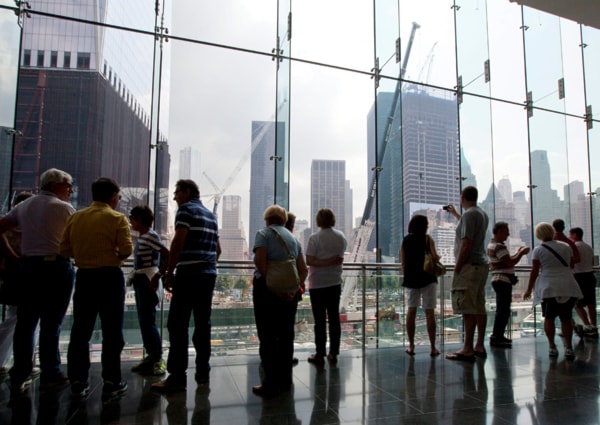NEW YORK — Nearly 300,000 people who live in flood-prone areas of New York City were ordered to evacuate Friday as Hurricane Irene sets its sights on the nation’s largest city. New Yorkers, many of them without cars, don’t have much time to get out of the way before the city shutters its subways, buses and trains on Saturday.
Mayor Michael Bloomberg ordered a mandatory evacuation by 5 p.m. Saturday for low-lying areas that house about 270,000 people. The areas include the Battery Park City complex on the southern end of Manhattan; Coney Island, famed for its boardwalk and amusement park; the beachfront community of the Rockaways and other neighbourhoods around the city.
Meanwhile, subways, buses and commuter trains in the city, on Long Island and in the northern suburbs will begin their final runs around noon Saturday, Gov. Andrew Cuomo said.
Metropolitan Transportation Authority officials have said they can’t run the transit system once sustained winds reach 39 mph (63 kph), and they need an eight-hour lead time to shut it down. Officials have entreated residents to take it upon themselves to get out early, but it remained unclear how many would heed the warnings that subways and buses might not be there for them if they waited.
While the evacuation was a first for New Yorkers, “I would think that the vast bulk will comply,” Bloomberg said at a news conference. “Unfortunately, there’s a handful who will not comply until it’s too late. And at that point in time, you can really get stuck.”
“Waiting until the last minute is not a smart thing to do,” he added. “This is life-threatening.”
While people who refuse to evacuate technically could face misdemeanour charges, the mayor said there was little authorities could do to force people to leave their homes.
“We do not have the manpower to go door to door and drag people out of their homes,” he said. “Nobody’s going to get fined. Nobody’s going to go to jail. But if you don’t follow this, people might die.”
The mayor said he was largely relying on the media to inform residents. And police officers would use the loudspeakers on their patrol vehicles to spread the word, officials said.
Shelters were opening beginning Friday afternoon and other preparations continued as the city faced the likelihood of its first hurricane warning since 1985. A hurricane watch was in effect Friday for New York City and Long Island for Sunday, with storm conditions possible Saturday night.
State Director of Operations Howard Glaser said the noon shutdown should provide “sufficient capacity” to get residents out of vulnerable areas. Cuomo said the decision would keep subways and buses “out of harm’s way” so service can return as soon as possible after the storm. Additional buses were being placed on the streets to accommodate evacuees.
In a city where many residents don’t own a car, Bloomberg said he still believed officials could handle any overflow of the transit system at its scheduled shutdown time. Residents would be able to get to shelters, he said.
“Nobody expects you to go walk 10 miles,” he said. “You’ll get to the shelter, it’s our responsibility and we think that we can handle it.”
For those with cars, parking is available at the city’s evacuation centres. They are allowed to bring pets. From the centres, each family will be assigned to a shelter. Buses will run from the evacuation centres to the shelters.
The MTA has never before halted its entire system — which carries about 5 million passengers on an average weekday — in advance of a storm, though the system was seriously hobbled by an August 2007 rainstorm that disabled or delayed every one of the city’s subway lines. The last planned shutdown of the entire transit system was during a 2005 strike.
Said MTA Chairman Jay Walder, “We’re working forward on a plan that will do two things: It will help effectuate the evacuation ... and it will protect the safety of our customers and protect the safety of our equipment.”
